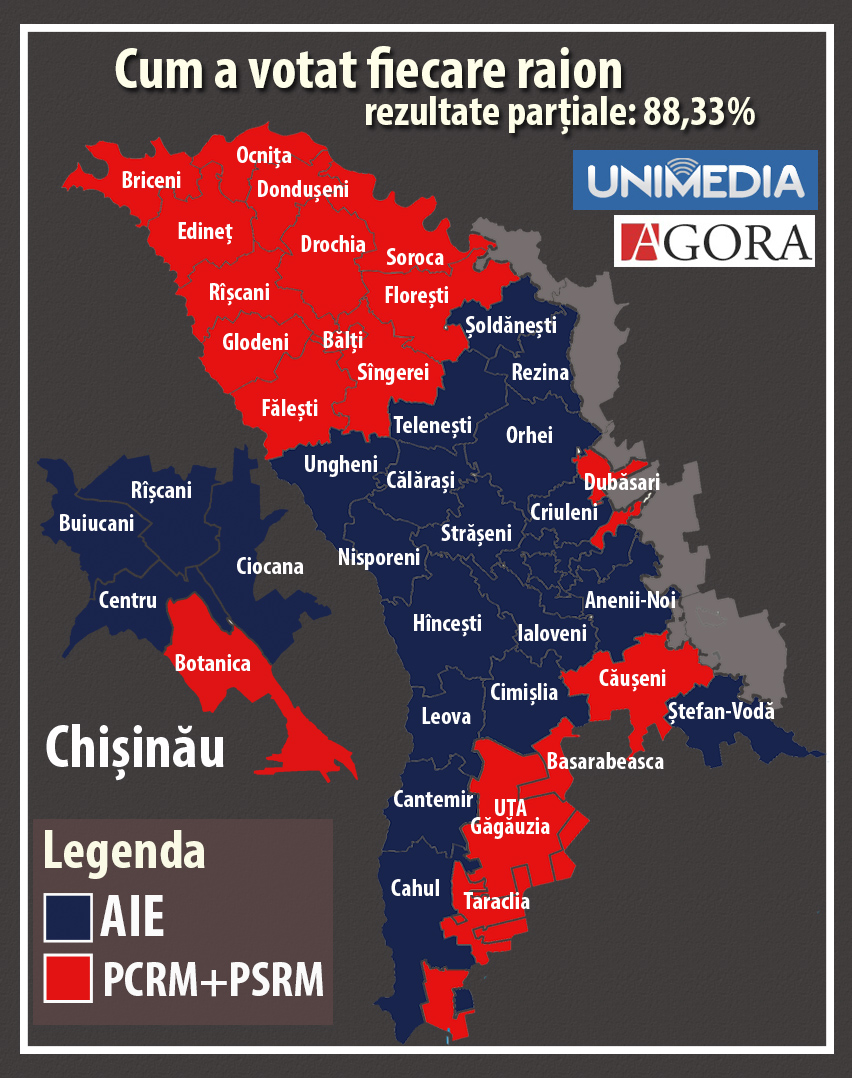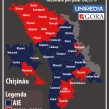
UNEDIFYING DEBUT TO 5+2 NEGOTIATIONS ON MOLDOVA
Publication: Eurasia Daily Monitor Volume: 2 Issue: 203
By:

After a 15-month break, negotiations on Transnistria resumed on October 27-28 in Chisinau and Tiraspol, now in the 5 + 2 format. This includes the United States and the European Union as observers to the old five-sided format of Russia, Ukraine, OSCE, Chisinau, and Tiraspol. That Moscow-created format, in fact a four-versus-one equation, had operated from 1997 onward and brought Moldova to the brink of liquidation as a state through Russian-“guaranteed” “federalization” with the Russian-installed authorities in Tiraspol. Moldova finally withdrew from that format in July 2004 and called for accession of the United States and the EU as full-fledged parties to negotiations.
America and Europe, however, seem content with observer roles. The new format remains fundamentally unbalanced for this reason and also because Washington, Brussels, and the OSCE continue to discourage Romania’s participation.
At this stage, the negotiations’ official goal is no longer a political settlement of the conflict (this goal may be reinstated at follow-up rounds), but rather resolving “current issues.” The October 27-28 negotiations faced the following issues:
Withdrawal of Russian forces:
Moscow and Tiraspol claimed that the pause in the political negotiations had blocked the military withdrawal. Chisinau set the record straight by noting that the military withdrawal had been halted well before the negotiating pause. OSCE Mission chief William Hill appealed to Moscow and Tiraspol to show “political will” and resume the withdrawal. That mission’s four-year-old “political-will” argument comes across as a supplication that almost certainly invites Moscow’s derision. Moscow does show its “political will” in refusing to withdraw the troops. At least, the Mission no longer attempted this time to excuse Russia by blaming Tiraspol for “not allowing” Russia to withdraw its forces.
Political settlement:
Although this was not officially on the agenda, the matter inevitably came up for informal discussion. Russian envoy Valery Nesterushkin referenced Moscow’s plan, which he had recently handed over to all the other participants in the negotiations. The unpublished plan amounts to a reiteration of the notorious 2003 Kozak Memorandum. Moldova’s Reintegration Minister and envoy to the negotiations, Vasile Sova, pointed out that Moldova had officially refused to take delivery of the Nesterushkin plan. Sova, moreover, ruled out any “parallel negotiations” on Russian documents within or outside the 5+2 format.
“Elections” in Transnistria:
At this round, all parties decided to engage in consultations on instituting an OSCE assessment mission that would determine the feasibility of democratic elections in Transnistria. In this context, none of the parties acknowledged the fact that Transnistria is a foreign-occupied, foreign-administered, criminalized enclave. Such an acknowledgment would have cast doubt on the apparently emerging intentions to legitimize Transnistria’s authorities. Ukrainian President Viktor Yushchenko’s envoy to the negotiations, Dmytro Tkach, had until most recently insisted on international recognition of the December 2005 elections to Transnistria’s Supreme Soviet as democratically valid. The OSCE latched onto this idea as a godsend to an agonizing organization; but — with greater sophistication than Kyiv — the OSCE understood the need for a minimally decent interval. The OSCE Mission takes the position that democratic elections in Transnistria can be prepared within eight months of a political decision to that effect. During this round, Tkach served notice that Verkhovna Rada deputies and Ukrainian non-governmental organizations are going to monitor — and, by implication, bless — the Supreme Soviet elections. For his part, Moldovan envoy Sova underscored the need for creating necessary pre-conditions — including demilitarization, disbandment of Tiraspol’s State Security Ministry, media freedom, and free operation of Moldovan political parties in Transnistria — ahead of any elections there.
Confidence-building, security and disarmament measures:
All participants agreed that Chisinau and Tiraspol are to begin exchanging information on their respective troops and armaments by December 1. They further agreed that the OSCE, Russia, and Ukraine are to work out among themselves a set of procedures for inspecting military-industrial plants in Transnistria over a period of at least three months and maximum 12 months. Chisinau’s and Tiraspol’s representatives are not to participate in the inspections.
Negotiating “process”:
All participants expressed satisfaction with the resumption of a “process” of negotiations. The Moldovan side, however, also expressed regret over the lack of results, and reserved the right to “respond appropriately” if follow-up rounds revert to the pattern of “negotiations for the sake of negotiations.” Although beneficial results could not realistically be expected from this round, one counterproductive result is apparent: Washington and Brussels have signed a document that accepts Russia’s old definition (dating back to 1992 and 1997) of the format: the two parts of Moldova as “parties to the conflict,” and Russia as “mediator” (alongside Ukraine and the OSCE). These definitions fail to acknowledge those facts that a growing number of Western diplomats acknowledge privately: that this conflict does not involve two parts of Moldova, but is rather an interstate conflict waged by Russia in Moldova; that Tiraspol’s authorities are Russia’s appointees, and that Moscow in no way qualifies as “mediator.”
(Moldpres, Interfax, Olvia Press, October 26-31)




